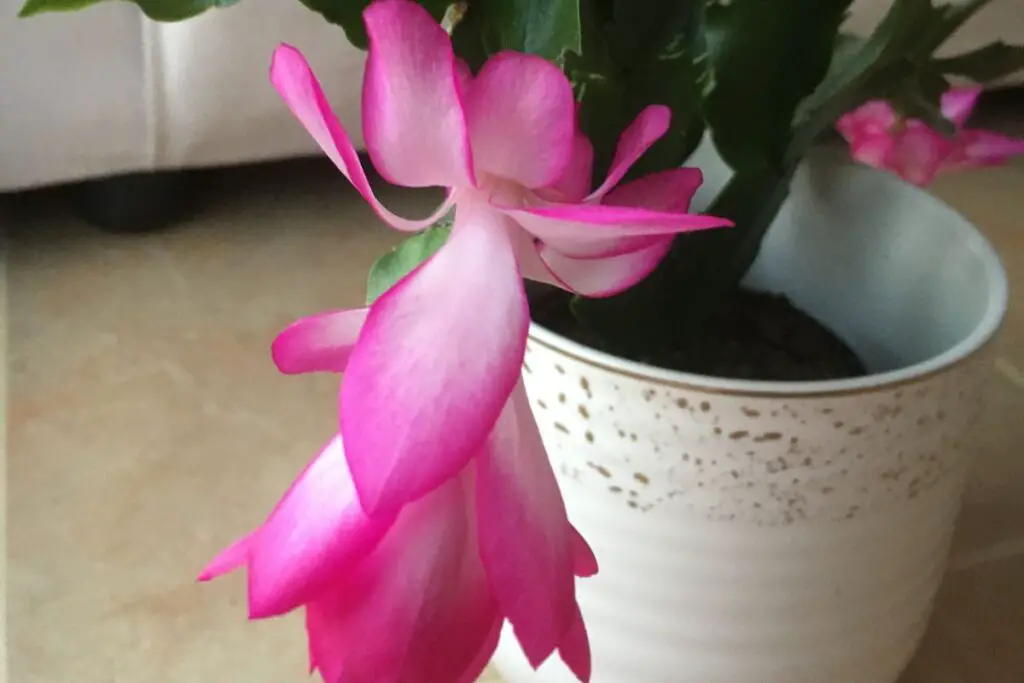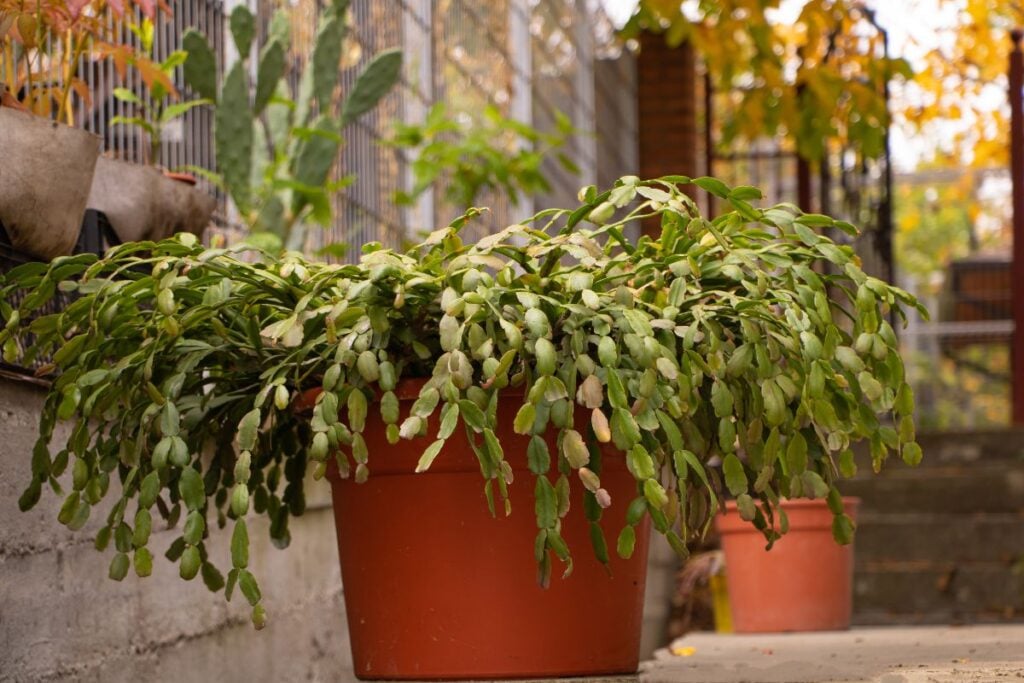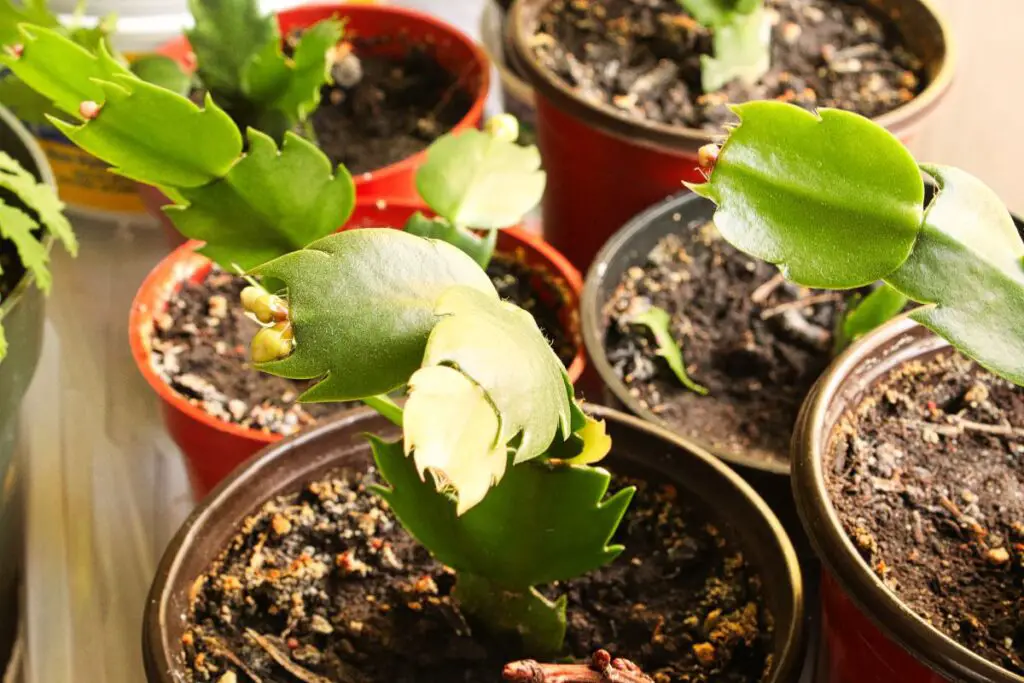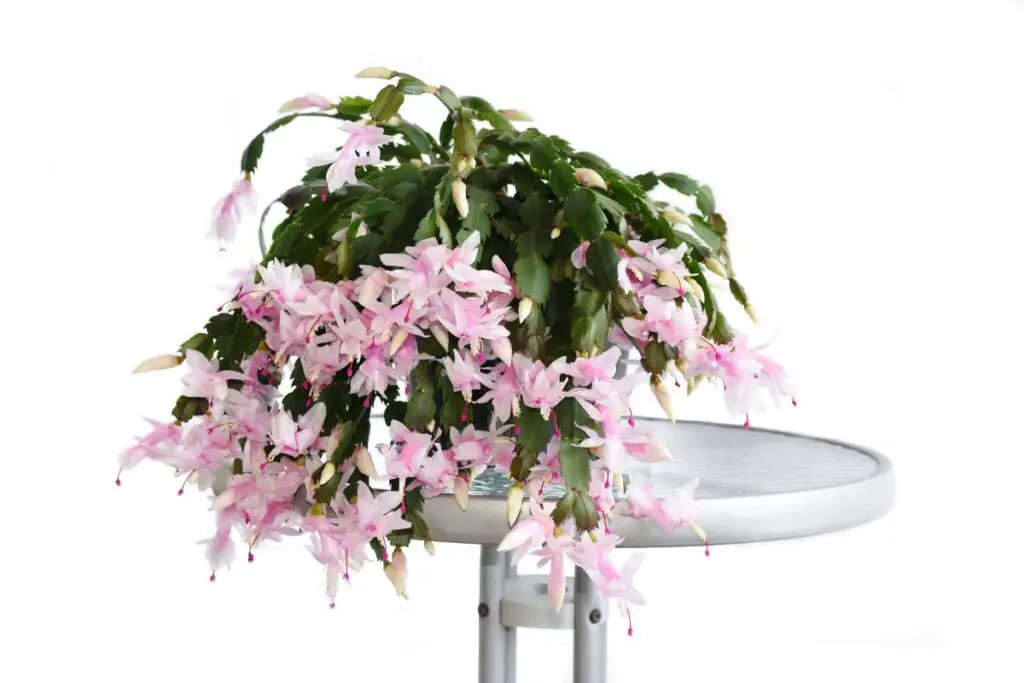Christmas cactus is an attractive festive plant that can be grown indoors and outdoors.
They are quite resilient plants to grow but need the right soil mix to thrive, and they have some requirements to formulate a perfect soil medium.
There is a wide variety of soil mixes available in the market, out of which you have to choose the right soil mix. But how to choose the right soil mix for your Christmas cactus? What kind of soil is best for them?
Christmas cactus prefers a soil mix that is well-draining, aerated, lightweight, and nutrient-rich. You can formulate one by mixing a regular potting soil, adding perlite, and compost to make it well-draining and fertile. Avoid using garden soil as it is too heavy for them.
Soil mix is the base for any plant’s growth and development. If you grow your plant in the right soil medium, you will help them nourish and fulfill their nutrient needs.
You might not know the importance of an appropriate soil mix, but we assure you will not regret choosing the right mix.
The article below will tell you what your Christmas cactus prefers and what factors affect their soil requirements. Let us read further about the same and choose the right soil.

Things to keep in mind while choosing a soil mix
A few things are advised to consider before you choose that soil mix for our Christmas cactus:
- Well- draining
- Lightweight
- Nutrient-rich
- Aerated
You should check these factors before using any soil mix on your Christmas cactus; they cannot grow in just any soil.
If you don’t feel the same, you can try with any soil available and check yourself.
The right potting medium helps the plant to remain healthy and strong. If the soil mix is not right for your Christmas cactus, they will face issues now and then and can even die.
The wrong soil mix will lead to poor plant growth, weak plant, wilted leaves, and unhealthy leaves and stems.
The prime factor is well-draining because your Christmas cactus does not like to sit in water.
Well-draining soil will allow excess water to drain easily, preventing root rot.
It is recommended to use organic matter in the soil to make it aerated.
The garden soil will block air and water flow. In contrast, organic matter in the soil will allow easy air and water flow, also retaining enough moisture that the soil stays moist and not soggy.
The soil should be lightweight and aerated; this allows easy air and water flow and allows the root to breathe. It will also prevent lumps in the soil, generally promoted by garden and heavy soil.
They need organically rich soil to support their growth and development, especially in pots.
Naturally, they can grow by sinking in decomposing leaves and debris available on the sides of the trees. But in indoor gardening, they need nutrient-rich soil mix to grow and develop.
The best soil mix balance of all the above will promote the plant’s growth and prevent root rot, overwatering, fungi, and bacteria growth to a large extent.
Best soil mix for Christmas cactus
Since the major requirements are clear from the above topic, we know what we need.
The soil mix needs to be extremely well-draining, aerated, lightweight, and nutrient-rich to provide a perfect growing environment for the plant.
We need the soil mix to meet the above requirements, which we have made simpler for you by bringing some best mixes out of the many we have tried.
The following mixes are ideal for your Christmas cactus:
Recipe 1:
1/3 parts potting soil
1/3 parts cactus or succulents mix
1/3 parts coco coir chips or fiber
Recipe 2:
1 part potting soil
1 part compost
1 part fine gravel or sand
The first soil mix: The first mix is the perfect choice for your Christmas cactus and will never fail them. Easily available products and makes the soil just perfect and ready to plant.
It has 1/3 parts potting soil (sterilized), 1/3 parts cactus or succulents mix, and 1/3 parts coco coir chips or fiber.
This mix is rich and drains well, light, and aerated. This will provide adequate drainage and also retain enough moisture and nutrients to support their roots.
We recommend using sterilized soil to prevent disease and pests organisms growing in the soil.
The second soil mix: A second mix is also a great option for Christmas cactus. It is airy, balanced, organically rich, and well-draining.
It is prepared by mixing 1 part regular potting soil, 1 part compost, and 1 part fine gravel or sand.
If sterilized, it will likely prevent pests, diseases, and weed seeds.
Looking for gardening supplies? We have tested 100's of products before recommending them to you guys. Check out our best pick below:
| Image | Gardening Supplies | Best Price? |
|---|---|---|
 Top
Top Top
Top | Raised Garden Bed Kit | Check On Amazon |
 | XLUX Soil Moisture Meter, Plant Water Monitor, Soil Hygrometer Sensor for Gardening, Farming, Indoor and Outdoor Plants, No Batteries Required | No Results |
 Top
Top Top
Top | 82 Pcs Garden Tools Set and Extra Succulent Tools Set | Check On Amazon |
 | Joeys Garden Expandable Garden Hose with 8 Function Hose Nozzle, Lightweight Anti-Kink Flexible Garden Hoses, Extra Strength Fabric with Double Latex Core, (50 FT, Black) | No Results |
 Top
Top Top
Top | Dual Chamber Compost Tumbler | Check On Amazon |
 Top
Top Top
Top | Sunnyglade Plant Stakes | Check On Amazon |
 Top
Top Top
Top | Organic Cold Pressed Neem Seed Oil | Check On Amazon |
 Top
Top Top
Top | Mighty Mint Gallon :-Insect and Pest Control Peppermint Oil | Check On Amazon |
 Top
Top Top
Top | Scotts DiseaseEx Lawn Fungicide | Check On Amazon |
 Top
Top Top
Top | Jacks Classic 20-20-20 All Purpose Fertilizer | Check On Amazon |
 Top
Top Top
Top | 30,000 Seeds Pollinator Attracting Wildflower Mixture | Check On Amazon |
 Top
Top Top
Top | Survival Vegetable Seeds Garden Kit-Over 16,000 Seeds | Check On Amazon |
Does Christmas cactus-like acidic soil?

Christmas cactus-like acidic mix, with pH levels between 5.2 to 6.2. the soil prepared for cacti and citrus trees fulfills their acidic and other requirements.
You can make your soil mix by using the recipe we gave earlier, fulfilling their soil requirements.
Low pH levels cannot perform well for your Christmas cactus, and they will lead to issues such as leaf burnt, yellow leaves, brown leaves, and even death of the plant.
Do Christmas cacti like cactus soil?
Christmas cactus likes well-draining soil mix, which surely is. But we advise you to mix with other organic matter such as coco coir chips, perlite, etc. This will make them rich and fertile and also allow airflow easily.
When to repot Christmas cactus?

Christmas cactus should be repotted during late winter when the blooming ends or early spring.
Unlike most plants, they can be repotted in late winter but never repot when they are actively blooming.
They like when their roots are slightly crowded, so do not repot just when you notice their roots are bounded. Frequent repotting can damage this forever living plant.
Repotting every three to four years is adequate. You do not need to go by the rule. They can stay root-bound and bloom for years in the same pot.
Also, take a pot one size larger than the existing pot to allow roots to grow and extend to their full potential.
Use fresh potting mix and not the previous one. Take appropriate soil mix to replenish the nutrients and give the plant a nutrient boost to grow and combat repotting shock faster.
Sometimes the roots will not show signs that they are bounded and compact. You can look for other signs to determine if your plant is root-bound.
They are:
- Dehydrated plant
- Soil drying faster
- Roots circling the bottom
- Stunted growth
- Breaking pot
- Brown and yellow leaves
- Falling of leaves
What size of the pot is best for the Christmas cactus?
Christmas cactus grows best when slightly pot-bound, producing more when snug in their containers. They have shallow roots that bore only a short distance into the soil.
You can be more specific while choosing the right pot size for your Christmas cactus. Look for the vessel 10% larger in diameter than your plant at its widest point.
If your Christmas cactus is 4″ approx at its widest pots, then consider a container with a 4.5″ – 5″ diameter.
Picking the wrong sized pot can hurt your plant and stunt its growth.
Choosing the right pot is important, and using fresh and adequate soil mix will promote their growth.
Finding the appropriate sized pot will become easier if you figure out how pot affects your plant’s growth.
Make sure the pot has at least one drainage hole, as your Christmas cactus does not like wet feet and can be easily prone to root rot in such conditions.
Final thoughts

This section is especially for impatient readers jumping directly to conclusions. We make sure to combine all the important points so that you do miss anything.
Christmas cactus are epiphytic cacti not similar to desert cactus; they have different characteristics.
They are not drought tolerant and bloom in winter. They need a well-draining, organically rich, aerated, and lightweight soil mix.
You choose from different soil mixes to grow your Christmas cactus in.
Our favorite is 1/3 parts potting soil (sterilized), 1/3 parts cactus or succulents mix, and 1/3 parts coco coir chips or fiber.
Another mix is prepared by mixing 1 part regular soil, 1 part compost, and 1 part fine gravel or sand.
Both are balanced and rich in nutrients, slightly acidic as your plant likes. They will allow air and water to flow and retain enough moisture required to absorb nutrients.
You should repot them every 3-4 years, but checking for root-bound signs is advised before repotting them until and unless the issue is pests, disease, or root rot.
Reference: NC State University, Nebraska Extension in Lancaster County, Researchgate, Texas A&M University, Chicago Botanic Garden.
